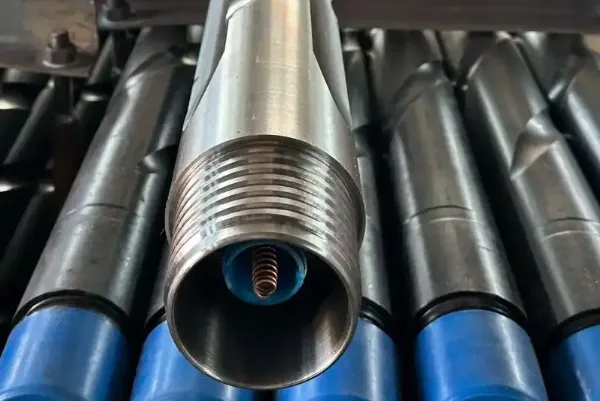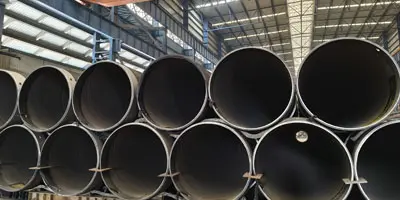API 5DP is a crucial standard in the oil and gas industry that specifies the technical requirements for steel drill pipes used in drilling operations. It covers the requirements for upset ends, tool joint welding, and various performance aspects, ensuring drill pipe quality and durability to withstand the demanding conditions of drilling environments. The API 5DP standard defines the delivery technical conditions for three product specification levels (PSL-1, PSL-2, and PSL-3) of steel drill pipe with upset ends and tool joint butt welding for drilling operations in the petroleum and natural gas industry. The requirements of PSL-1 form the basis of this international standard. Appendix G provides supplementary technical requirements for PSL-2 and PSL-3.
Scope of API 5DP
API 5DP applies to steel drill pipes used in oil and gas drilling operations and is divided into three product specification levels (PSL):
PSL-1: The basic level, forming the foundation of the API 5DP standard.
PSL-2 and PSL-3: These have stricter technical requirements than PSL-1, as specified in Appendix G of the standard.
This standard covers different grades of drill pipes, including:
E-grade drill pipe (regular strength);
High-strength drill pipe, classified as X, G, and S grades.
The standard provides typical drill pipe structures, listing the main elements and lengths, with key dimensions and weights specified in both SI units (Table A.1) and USC units (Table C.1).Additionally, API 5DP can be applied to drill pipe tool joints not specified by other API or ISO standards. It allows for agreements between buyers and manufacturers to customize drill pipe body and/or tool joint dimensions. The standard also outlines additional testing, performance verification, and non-destructive testing (NDT) requirements that can be mutually agreed upon (see Appendix E).
Structure and Features of API 5DP Drill Pipes
The main features are as follows:
1. Material: High-strength alloy steel pipes such as AISI 4130 or 4140 are usually used.
2. Size range: Outer diameter from 60.32 mm to 168.28 mm, wall thickness from 6.45 mm to 12.7 mm
3. Length: R1 (18-22 feet), R2 (27-31 feet) and R3 (38-45 feet).
4. Connection type: Including internal flush (IF), full hole (FH), API regular (REG) and numerical connection (NC).
5. Steel grade: Covers E75, X95, G105, S135, etc.
Drill pipes specified in API 5DP typically consist of three main components:
1.Drill Pipe Body: The main section that withstands tensile, torsional, and internal pressure loads.
2.Tool Joint: The thickened end sections with threads for connecting drill string components.
3.Upset Ends: To improve fatigue resistance, drill pipe ends are thickened using one of the following methods:
External Upset (EU)
Internal Upset (IU)
Internal-External Upset (IEU)
These upset types enhance the drill pipe’s resistance to bending and fatigue, extending its service life under heavy loads.API 5DP also specifies the mechanical properties of drill pipes, including tensile strength, yield strength, and hardness. The detailed requirements for tool joint threading can be referenced in ISO 10424-2 or API Spec 7-2, ensuring the reliability of threaded connections.

Manufacturing and Inspection of API 5DP Drill Pipes
To guarantee drill pipe quality and performance, API 5DP imposes stringent manufacturing and inspection requirements, including:
Chemical Composition Control: Ensuring the steel material meets the specified grade requirements.
Mechanical Property Testing: Including tensile strength, yield strength, and impact toughness tests.
Non-Destructive Testing (NDT): Such as magnetic particle inspection (MPI) and ultrasonic testing (UT) to detect cracks or defects.
Hardness Testing: Verifying the hardness levels of both the pipe body and tool joint to ensure wear resistance and strength.
Dimensional Inspection: Ensuring that the outer diameter, wall thickness, and thread dimensions comply with API 5DP tolerances.
For PSL-2 and PSL-3 drill pipes, API 5DP requires additional quality inspections, including fatigue testing and extended non-destructive evaluations, to enhance reliability in extreme drilling environments.
Performance of API 5DP Drill Pipes
While API 5DP does not directly address performance in specific applications, users can refer to API RP 7G, which provides detailed guidelines on optimizing drill pipe performance. One crucial aspect is fatigue resistance, which focuses on extending the service life of drill pipes and minimizing the risk of failure under repeated loading conditions. Additionally, corrosion resistance is essential, particularly in environments with high concentrations of H₂S (sour gas) or CO₂, where proper material selection and protective measures are necessary to prevent degradation. Another key factor is torque resistance, especially in deep wells and complex drilling operations where drill pipes are subjected to high torque loads that can impact their structural integrity. For extreme conditions such as high-temperature, high-pressure (HPHT) wells, as well as horizontal and directional drilling, using high-strength drill pipes that meet API 5DP specifications is critical to ensuring operational safety, efficiency, and long-term reliability.
Why follow API 5DP?
API 5DP is a valuable tool for improving the quality of drill pipe and avoiding NPT. It provides a consistent method for measuring ID and thickness, thus eliminating variability; it also requires that all measurements be taken on each standard level of inspection.When selecting drill pipes, factors such as well conditions, drilling depth, and formation characteristics should be considered to ensure compliance with API 5DP and optimal performance in drilling operations.
Other API Standards for Drill Pipe
To define the delivery requirements for drill pipe production, there are several API standards in place. These API documents will show you what the new form of drill stem components should look like:
API Spec 7-1: Specification for rotary drill stem elements
API RP 7-2: Specification for threading and gauging of rotary shouldered thread connections
API Spec 5B: Threading, gauging and inspection of
casing and tubing, and line pipe threads
API RP 5B1: Gauging and inspection of casing, tubing, and line pipe threads
As a key standard in the oil and gas industry, API 5DP ensures the quality, performance, and safety of drill pipes. It covers both E-grade and high-strength (X, G, S) drill pipes and provides different PSL levels to accommodate various drilling conditions. API 5DP sets strict requirements for material composition, manufacturing, and inspection to ensure drill pipes withstand extreme drilling environments and high-stress conditions.
When selecting drill pipes, in addition to following API 5DP, users should refer to related standards like API RP 7G to optimize drill pipe performance, extend service life, and improve drilling efficiency.






 English
English Español
Español بالعربية
بالعربية











 Phone :
Phone :  Whatsapp :
Whatsapp :  Email :
Email : 


